
SH_MM
-
Posts
1,635 -
Joined
-
Last visited
-
Days Won
156
Content Type
Profiles
Forums
Blogs
Gallery
Downloads
Events
Posts posted by SH_MM
-
-

LuWa system demonstrator
- Laviduce, David Moyes, Laser Shark and 1 other
-
 3
3
-
 1
1
-
On 7/21/2021 at 7:55 PM, Stimpy75 said:
i always wondered why they didn't put sth bigger than 20mm later on?
There was a competition during the 1980s to upgun the Marder while keeping the existing turret. Rheinmetall developed the Rh 205 gun for this competition, while Mauser developed the MK 25 (also known as Mauser Model E). Both of these guns were chambered in the 25 x 137 mm caliber. In the end it was decided that the funds would be of more use in the Marder 2 IFV development/Kampfwagen 90 project.
-
On 7/22/2021 at 5:23 PM, Hal said:
But none of this has happened with Poland, even with the stated desire to acquire many more tanks than Spain and Greece combined. German government bias?
Local production of Leopard 2 was/is being offered to Poland, but they decided to buy the M1A2 SEP v3 instead. KMW even offered license-production of the Leopard 2A6 to Turkey (they chose Hyundai's offer to help them create the Altay instead...), which is a lot less liked than Poland by all German politicians. Poland however insisted on a 60 tonnes weight limit and trying to develop their own tank (Gepard, Wilk, etc.) before the current government decided to ignore all of that and opt for the Abrams instead.
-
-
17 minutes ago, Sturgeon said:
How is it not? You accused me of bad faith argument or at least being too stupid to avoid a fallacy, you did it when I committed no such fallacy, and you committed the fallacy you accused me of to accuse me of it.
I'd say that's VERY insulting.
If you feel that way, then I apologize. Sorry for that.
Ban me if you like, its your forum. I am still not sure how a photo of German WW2 tanks is the correct response to the previous question, but you probably had further thoughts that weren't fully expressed - or fully understood by me - when posting/seeing just that photo.
13 minutes ago, Ramlaen said:25" is a verified roadwheel size for Abrams, where does 700mm for Leopard 2 originate?
It is explicitly stated in Paul-Werner Krapke's 1986 book. He was former "project manager" (leitender Baudirektor) of the Leopard 2 program. The only common part/dimension (out of 13 or 14 submitted for standardization) that the USA and the FRG agreed upon was the width of the tracks.
-
How is this an insult?
-
24 minutes ago, Sturgeon said:
Oh, I dunno.
Strawman. Tanks alone are useless on the modern battlefield with combined arms doctrine. Tanks alone were already useless in WW2.
24 minutes ago, Sturgeon said:Diehl 570s fit on an Abrams. You need a different sprocket, but other than that they work fine. I've never heard anything about the Leopard 2 having different diameter roadwheels.
Abrams' roadwheels have a diameter of 25 inches (635 mm); Leopard 2's roadwheels have a diameter of 700 mm.
-
I don't think anybody complains that the M1A2 SEP v3 would be a bad tank. The real questions are:
- Does Poland need 800 tanks (12 tank bataillons + ca. 100 tanks for training etc.)?
- Does Poland need these tanks instantly?
Poland's current government does have very different answers to these question than their previous (and from what I've read, also a lot of Polish journalists & soldiers).
10 minutes ago, Sturgeon said:Also, the complaint that you're running multiple types of tanks is... A bit weird considering the tanks in question. Abrams and Leopard are sister tanks. They share most of their wear parts like roadwheels, tracks, etc.
That is not the case. The road wheels have different diameters and are made from different materials. While Diehl offered tracks based on the Leopard 2's Type 570 tracks (with altered length) to the US Army in the 1980s, these were no selected; the Abrams uses American-made T158 tracks (or a newer version of them).
The USMC's old Abrams tanks had more in common with the Leopard 2 (Wegmann-designed smoke grenade dischargers, Zeiss-made laser rangefinder & Rheinmetall's programmable HE ammunition).
-
-
19 hours ago, Korvette said:
I have since removed the photo about my initial post, it appears the schematics are still classified and hasn't been approved at all for public release, I am however willing to answer some questions about the content if that's allowed.
Seems like he is getting a lot of attention now:
https://ukdefencejournal.org.uk/classified-challenger-tank-specs-leaked-online-for-videogame/
-
Interesting article on the Leopard 2's future published by the European Defence Review (EDR) magazine:
Spoiler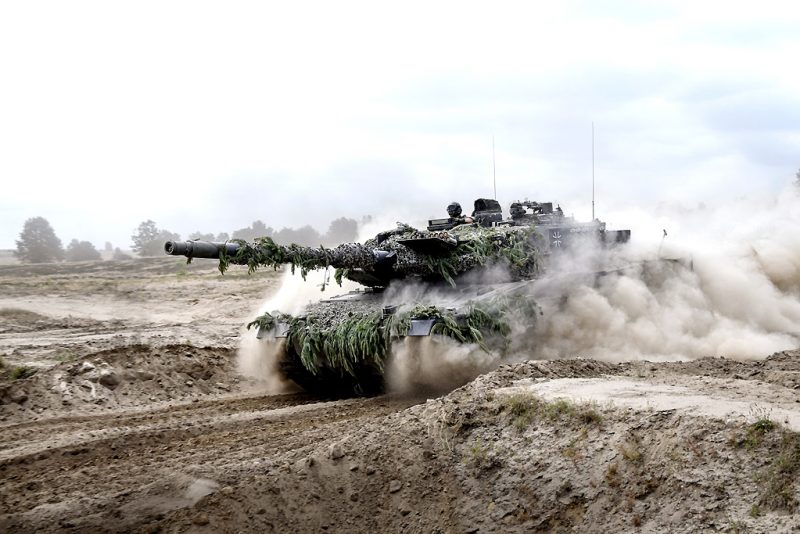
Krauss-Maffei Wegmann: the ever-lasting Leopard 2
By Paolo Valpolini
Fully involved in the bi-national MGCS (Main Ground Combat System) together with Nexter and Rheinmetall, Krauss-Maffei Wegmann (KMW) is nonetheless considering 30 more years of operational life for its Cold War era main battle tank, which is in use or contracted by 19 countries, 14 in Europe, Austria, Denmark, Finland, Germany, Greece, Hungary, the Netherlands, Norway, Poland, Portugal, Spain, Sweden, Switzerland and Turkey, one in north-America, Canada, one in south-America, Chile, one in the Middle East, Qatar, and two in Asia, Indonesia and Singapore.
Many of those tanks were build for the Bundeswehr when NATO was facing the Warsaw Pact threat, and have then been sold to the other nations when the Soviet empire collapsed putting a halt to the Cold War. Along the years KMW launched a series of upgrade programmes based on customers requirements that led from the original Leopard 2 A4 deployed in Central Europe by the German Army and the Netherlands Army in the 1980s, to the Leopard 2 A7A1 that is planned to be delivered to the Bundeswehr.
As the MGCS original timetable for its introduction in 2035 seems currently to be slightly optimistic, the Leopard 2 might remain the main NATO MBT for a while. “I think the MGCS programme needs clear decisions, an established distribution of roles, as well as a real commitment from our two governments,” Frank Haun, CEO of KNDS said on June 21st at the Paris Air Forum.
While new customers, such as Hungary, are acquiring brand new Leopard 2s, intending keeping them in service for a minimum estimated operational life of 20 years, the Munich-based company is already looking forward to extend the effectiveness of its tank minimum till 2040, by integrating new subsystems required by evolving battlefield scenarios, or even to take more radical actions to maintain the key weapon system of many armoured formations at the top of its effectiveness against evolving potential peer adversaries. Visiting the company in Munich, it was worth spending some time to get the latest information on the Leopard 2 evolution and clarify the status of the various upgrade programmes with Rainer Fichtner, the Senior Vice-President of the company MBT Division.
The German Leopard 2 evolution
Derived from A4 and A6 models, the German configuration of the A7 version includes an improved mine protection kit, developed for the A6M version, the addition of a programming unit allowing to fire the DM 11 high explosive ammunition, the adoption of a 3rd generation thermal imager in the commanders periscope, a wholly new man-machine interface based on digital control units, the adoption of the IFIS (Integriertes Führungs- und Waffeneinsatzsystem) battlefield management system, the SOTAS digital IP intercom, a new driver control and information system, a crew compartment cooling system in the turret, and a 20 kW auxiliary power unit allowing semi-silent watch and reducing acoustic and thermal signature when operating stationary.
A key element is the adoption of the Rheinmetall DM 11 round, which thanks to its programmable fuse provides a high operational flexibility, being effective against many types of targets, such as i.e. troops in the open when used in the airburst mode.
“A further step forward has been made with the Leopard 2 A7V. Here the firepower has been further improved with the introduction of the new L55A1 120 mm smoothbore gun which maintains the same chamber volume of the L55 but is cleared to operate at a higher pressure,” Rainer Fichtner tells EDR On-Line. This allows employing the latest kinetic energy ammunition, such as Rheinmetall’s DM73 APFSDS which development is nearly finished and should enter service soon, and the KE2020Neo, under development by the same company, that will provide even higher performances. A new full digital electric gun slaving system has been adopted. The A7V features a new hull which is fitted with improved internal protection modules, while a new protection package has been installed on the chassis roof as well as on the front glacis, bringing the protection of the chassis at the same level of that of the turret. Protection modules can be easily changed to adapt them to the evolving hollow charge threat.
“To cope with the increased weight, compared to the 55 tonnes of the A4 the A7V weighs 64 tonnes, we modified and reinforced the complete running gear, adopting new torsion bars and new tracks. A new final drive was installed, which gives the vehicle the same acceleration from 0 to 30 km/h of the A4, while the top speed is reduced from 70 to 60 km/h, as tactically speaking maximum speed is less important than acceleration at lower speed,” the VP MBT Division explains. The new running gear is designed to withstand up to 69 tonnes combat weight. The gunner WBG-X (Wärmebildgeräte-X) thermal sight has been replaced by a 3rd generation Hensoldt Attica GL, while the driver can now drive forward and backward using the new Spectus multispectral system, also provided by Hensoldt, which combines thermal and low light level cameras, both with the same field of view, the two images being fused according to the situation in order to provide the optimal image. Cooling has been completely reviewed; the A7V features a combined NBC/cooling system in the turret for cooling the electronics and the turret itself, and a separate cooling system in the chassis for the driver.
Qatar has acquired an improved version of the A7V known as A7+ QAT. It features the PERI RTWL, the Hensoldt commander’s periscope in use on the German Puma IFV, which includes a 3rd generation thermal imager, a laser rangefinder and new fibre optic gyros. It allows the commander to survey the battlefield and get target grids that are then handed over along the BMS, i.e. to artillery, if the target cannot be dealt with by the tank itself. Another add-on is KMW’s FLW 200 remotely controlled weapon station, that can be armed with a 12.7 mm machine gun or a 40 mm automatic grenade launcher. Finally the tank is equipped with a meteorological sensor. Qatar is the first nation to field a Leopard 2 fitted with a fully digital fire control system.
Active protection
To answer a Canadian Army requirement, KMW developed an RPG protection kit that was introduced on tanks deployed to Afghanistan. Effective against standard threats as RPG-7, it could not cope with higher threats coming from antitank missiles such as the Kornet. Around six years ago KMW started studying the integration of an active protection system into its MBT. The Leopard 2 parent company considered that passive armour packages reached their limit against the hollow charges threat, current HEAT warheads being able to penetrate over 1,000 mm of rolled homogeneous armour (still the standard reference for penetration, although it is far from being representative of current composite armour) hence it started looking at other solutions. The choice went to the Trophy active protection system, developed by Rafael and installed on Israeli Merkava 4 MBTs. It was initially integrated on a Leopard 2A4, which was used for tests and successfully defeated incoming RPG rockets and anti-tank missiles.
“This development is now finalised, fitted to Leopard 2A6, which when equipped with the APS becomes the Leopard 2 A7A1. The first demonstrator will be delivered to the Bundeswehr in July 2021 and will be tested in different scenarios based on the European reality, such as adverse conditions as dust, rain, snow, urban environment, in order to see how the system reacts in the Old Continent,” Rainer Fichtner said. The four radar antennas are located at the corners of the turret, while the two effectors are installed at the back of the turret, right and left.
The series contract signed in January 2021 calls for the delivery to the German Army of an undisclosed quantity of Leopard 2 A7A1 tanks fitted with the Israeli system. According to available information the order should be for 17 Leopard 2 A7A1 (plus the prototype), sufficient to cover the needs of the tank company assigned to the Bundeswehr contingent that will be provided to the Very High Joint Readiness Task Force (VJTF) in 2023, when Germany will take over the lead of the NATO spearhead force.
Further evolution
Part of the systems already installed in some of the various configurations might well migrate in new upgrade packages. It is the case of the commander’s periscope, KMW considering installing the PERI R17 A4 which is fitted with a Class 1 laser rangefinder.
While a 3rd generation Attica Z thermal camera is now available in the commanders periscope and a similar system has also been fitted to the gunners night sight, KMW is considering a further improvement, stepping from that 640×512 pixel thermal sensor to the full HD 1280×1024 pixel sensor, the Attica M-2. In addition, due to the availability of better and more reliable optronic sighting systems compared to the gunner original WBG-X, a discussion is ongoing about the need to maintain the optical channel.
“Remaining in the thermal sensors arena, in 2020 we evaluated the performances of LWIR (Long Wave InfraRed) against MWIR (Mid Wave InfraRed) to understand if it would make sense to mix different thermal imaging systems, as multiwave sensors in the same TI system are now available. MWIR systems have some advantages over longer distances, but there are issues on the battlefield due to blooming effects. For the European Leopard users, the decision is to remain with LWIR sensors,” Rainer Fichtner said.
Jammers and laser warning systems (LWR) are also part of an ongoing evaluation programme. Jammers used to counter radio-controlled IEDs have already been integrated into Leopard 2s, requirements for such EW systems being foreseeable not only to be used against RC-IEDs but also against drones, one of the increasing threats on today battlefield. As for LWRs, these provide a warning when the tank is illuminated by a laser; if the beam is that from an illuminator or from a beam-riding missile system, the crew can take some evasive action and countermeasures such as multispectral smoke screens can be activated.
KMW is installing different such systems on prototype tanks to allow its customers to carry out a full evaluation of what becomes available on the market.
The future: Leopard 2 Ax, Leopard 2 EDA and E-MBT
With the MGCS entry in service date probably moving to the right, the German Army is considering the next upgrade step for the Leopard 2, which is currently known as Leopard 2 Ax. This will of course take into consideration many of the aforementioned issues, and all requirements will be split between “must” and “option”. “The first decision to be taken is if the turret of the Leopard 2 Ax will be an existing turret submitted to further refurbishment or if it will be a wholly new turret. KMW considers that building a wholly new turret, exploiting new manufacturing techniques and advanced materials, and optimising the design since the early stages, will decrease mass at similar protection level, or will allow increasing protection maintaining the same mass, the most recent iterations of the Leopard 2 turrets being the result of a mass-increasing series of upgrades. “Protection remains a key issue, and we are looking of course at the adoption of reactive armour specifically designed to counter the kinetic energy threat, which is becoming again the main issue considering confrontations with near peer adversaries,” KMWs VP for MBTs said. Further improvements in sensors is required, as well as a wholly digital vetronic architecture, that will allow easy integration of a series of subsystems such as the tracking mode in a fully digital commander’s sight, and improved situational awareness for the driver and commander. The capacity to receive images from UAVs, or even the integration of a UAV as a long range reconnaissance asset, are also foreseen.
Beside the already mentioned MGCS, two more programmes are part of the MBT Division portfolio at KMW. One is the Leopard 2 A7 EDA, the European Defence Agency’s initiative to optimise existing MBT capabilities by pooling and sharing available assets that would offer benefits to all those countries with gaps in their heavy armour portfolio. The programme, launched in spring 2017, foresees the upgrade of existing tanks to a common A7 standard or even its new production, fitted for all options but not with all of them, and then a lease/rent scheme in which those countries with extra armour capacity would provide the tanks to those which lack it, in order to maintain the number of MBTs in Europe at the current level, the number of tanks having decreased from 15,000 to 5,000 in the last 20 years, a further reduction being considered unacceptable at European Union level.
The other programme is the E-MBT, for European Main Battle Tank, made of a Leopard 2 chassis fitted with the Leclerc turret, the latter being equipped with an automatic ammunition loading system, the tank crew being thus reduced to three members. A technology demonstrator of the E-MBT was exhibited at Eurosatory 2018, industry saying at that time that to become a true product it needed some four years from contract signature.
What remains sure is that the Leopard 2 is far from retirement.
Photos courtesy KMW, Finnish MoD, Hungarian MoD, P. Valpolini
Source: https://www.edrmagazine.eu/krauss-maffei-wegmann-the-ever-lasting-leopard-2
(Underlined text = emphasis added by me)
- Rico, Lord_James, Gauntlet and 2 others
-
 5
5
-
1 hour ago, Sturgeon said:
I had read that the buy was for 783 tanks.
At that price, nobody would complain. But its "up to 250 Abrams" according to Polish government.
54 minutes ago, Rico said:- Poland gets some real security boot on short term (Leo 2A7 would mean 5-7 years until the first ones would have arrived
I don't think that the M1A2 SEP v3 will become really operational with the Polish Army within less than five years. Polish MoD expects first batch by the end of 2022, but this is very optimistic and likely limited to at most a dozen tanks (which then will be used for training). The argument "Poland needs Abrams now, because Russia has the T-14" is also odd.
56 minutes ago, Rico said:and PiS is doing politics against Germany for a long time so Leo2 wouldn't be an option until different party takes over).
I've seen speculations in my Twitter feed regarding PiS's right-wing policies being a potential threat to the M1A2 SEP v3 (and the F-35) procurement. People there made analogies to Turkey's F-35 deal, basically stating "if PiS makes another stupid law, then Biden might cancel the deal". There were rumors (no idea how accurate these are), that the deal was already delayed because of some PiS-made law.
59 minutes ago, Rico said:- MGCS wins because Italian initiative is losing speed if Poland goes for M1 and Italy/Spain might join (speculation I know)
-
13 hours ago, Hal said:
Agreed. Don't involve Poland in MGCS, don't take the hint when they look to the K2PL... Okay, you get nothing.
Poland did not look to the K2PL; the K2PL was an unsolicited offer by H. CEGIELSKI-POZNAŃ S.A. (a company with no experiences in making tanks or other forms of AFV) and Hyundai-Rotem. It was not an initative of the Polish government/army.
9 hours ago, Sturgeon said:All the people trying to argue that Poland adopting the most proven and solid main battle tank on earth is a bad thing just because it's American is really giving me a laugh.
It is by all measures a bad deal for Poland. The whole deal is contradictory to the previous decades of Polish defence spending/doctrine.
- total contract value is supposedly up to $6 billion USD or up to $24 million per tank. Obviously in reality it doesn't work like that, because the contract also contains lots of other items (training equipment, simulators, spare parts, technical documentation, etc.) - but the only reason all of that is needed is the fact that the Abrams is a new type of tank for the Polish Army
- local industry involvement in M1A2 SEP v3 is apparently terribly low, at least according to Polish Twitter users. Currently it seems to be zero (all tanks refurbished and upgraded in the US with US standard parts, no "polonization"), but there is hope that support/maintenance contracts and production of spare parts could be taken over by Polish industry
- the M1A2 SEP v3's weight exceeds the maximum weight limit of many Polish bridges. Aside of the costs involved with fitting new torsion bars and running gear elements to the Leopard 2, the capacity of Polish bridges and AVLBs was cited by the Polish Army is a reason for the 60 tonnes weight limit of the Leopard 2PL tank.
- Poland has reportedly ordered up to 250 tanks, which is enough for four tank bataillons (which in the Polish Army have 58 tanks each), but there is a declared need (based on Polish MoDs plan) for twelve tank bataillons (4 Leopard 2 + 8 other)
- the Polish Army already had a program for a new generation of MBT as part of the Wilk program. The Polish industry had been working on a new design with unmanned turret and autoloader (basically a Polish Armata-lite) to fulfill the requiremenet
- in previous tank procurement/upgrade programs such as the Leopard 2PL, Poland handicapped itself (paying more, demanding less) in order to involve the local industry in the program. That also includes the transfer-of-technology and rights to a certain degree. All of this was useless with Wilk being essentially canceled thanks to the Abrams purchase
- the M1A2 SEP v3 is purchased using a "special budget" that is not part of the defence budget - where the money exactly comes remains unknown. There are rumors that PiS wants to use EU's Covid relief fund for the purchased, but that is tied to certain uses. There are also speculations that this special budget needs to be created by cutting other budgets
- the Polish military has a much more urgent need for other weapons than tanks
- the Polish MoD declared that Abrams tanks were needed to counter the T-14 Armata, which has yet to enter production
With the $6 bn USD, Poland could have spent one billion on modernizing OBRUM's tank plant and buy the licence to make 250 Leopard 2A7+ tanks, which would have been brand new rather than refurbished, upgraded old tanks. They even could have saved some money, as they wouldn't have the need to set up a complete new infrastructure for a new Leopard 2 variant. Or - which would be even better - a lot of other military projects could have been funded.
In terms of combat capabilities, the Abrams is obviously a lot better than the old T-72M1R and PT-91 - with the exception of the gunner's sight; even T-72M1R has third generation thermals by now.
9 hours ago, Sturgeon said:As far as I'm aware, and I'm conceding right off the bat that I'm not an expert, the tanks Poland has are either obsolete or inadequate in number. Poland is acquiring well more than 5 times the number of Abrams as they have Leo 2s on the upgrade path.
Poland already has four tank batallions with Leopard 2 tanks; half of them have the Leopard 2A5 (which is/will be modernized with new third generation thermal imagers made by PCO S.A.) and the other half receiving the Leopard 2PL (which was delayed due to the wish for a greater involvement of the Polish industry). In total there are 249 Leopard 2 tanks in the Polish inventory of which 142 are going to be Leopard 2PLs; not sure where you got the "5 times the number".
As for the Polish tank force: it is too large. After the Cold War, Poland kept a huge tank force mostly for industry-political reasons - state-owned workers of OBRUM/Bumar-Łabędy needed to be kept employed. There also was the hope to gain a boost in foreign relations with the sale of Polish-made tanks. From a military perspective, this was a bad decision, as other - more important - capabalities received a lower priority or where even canceled.
In reality the obsolete T-72s (and even the PT-91s) had extremely bad avialability rates, broke down often and costed more money than they were worth. Poland should have downsized its tank fleet to a "normal" level (by post-Cold War standards) and modernized the rest of its military. That would have been a lot more reasonable than replacing obsolete tanks that were never needed in the first place.
9 hours ago, Sturgeon said:Second thing to note, these tanks share full operational compatibility with the largest tank operator in Europe.
I didn't know that Greece operates the M1A2 SEP v3

-
-
13 hours ago, Korvette said:
A questionable person has yet again thrown out some photos and schematics.
Measurements are far from accurate (in the hundreds of mm).
Funny how the "tip" of the coaxial machine gun is labelled with "150 mm", but is depicted longer than the "200 mm" of yellow armor

-
48 minutes ago, unreason said:
Leopard 2's mantlet never became better protected, just smaller, by integrating part of the moving mantlet area from 2A4 into the rigid turret cheeks in 2A5.
Since Leclerc's and K2's cheeks are much lower than their mantlets, this solution isn't available to them. The French never got around to it on their uparmouring projects.That is not the case. Armor protection was improved by increasing armor thickness and using more modern armor inserts. The moving part of the mantlet was reduced in width, but the rest was not added into the rigid turret cheeks. There are now two additional parts (one on each side of the gun mantlet), that are mounted by "hanging" from the turret roof. They can be swiveled upwards in order to replace the gun.
-
12 hours ago, Atokara said:
The electronics systems and battle management systems that Korea has seem to be a much better offering than the Leopard.
Based on what? Did South Korea somehow get access to better CPUs and circuit boards in 2008 than Germany did in 2014? Did they somehow produce better thermals years before Germany? How did they end up with a better BMS?
The Leopard 2 doesn't have one BMS, it has nearly a dozen. While the South Korean BMS might be better than 1990s IFIS and the old FüInfoSys Heer, there are many different types of BMS integrated into the Leopard 2. Greece uses Rheinmetall's INCHINOS on the Leopard 2A6 HEL, Sweden has the TCCS (Tank Command and Control System), Spain has LINCE integrated into the Leopardo 2E, the German-Dutch Panzerbataillon 414 has tanks capable of operating either with IFIS or with the Dutch ELIAS, Switzerland has a RUAG-made BMS integrated into the Panzer 87WE, Singapore has integrated an Elbit BMS into its Leopard 2SG... the list is long. For the VJTF 2023, Germany has purchased new software from SitaWare... AFAIK the same system is used on the Leopard 2A7DK.
In terms of technology, I don't see how KMW's offer should be inferior to what Hyundai-Rotem can offer. The Leopard 2A7 is fitted with a Centurion i7 and a KommServer by ATM Computer (a subsidiary of KMW)... that's already overkill for a BMS. Combined these two computers have basically 100 times (or more) the computational power found on M1A2 Abrams and Stridsvagn 122 (pre-upgrade), which already had working types of BMS.
Given that Norway was one of the backers of NGVA, they probably demand a solution compliant with STANAG 4754; this would mean that both hardware and software of the current Korean BMS would be incompatible with the Norwegian requirements, whereas KMW already has a fully compliant solution. Software-wise I am 90% sure, that Norway will demand the incorpation of its own Kongsberg ISC, that has already been fielded on the recently upgraded Norwegian CV9030s.
12 hours ago, Atokara said:If Norway is offered KSTAM then that is a massive improvement in terms of firepower.
Two things would need to happen before that:
- KSTAM I or KSTAM II would have to enter production
- KSTAM I or KSTAM II would have to enter service with the ROKA
While KSTAM sounds cool, neither KSTAM I nor KSTAM II has evolved beyond the prototype stage. KSTAM II btw. was developed in cooperation with Diehl Defence of Germany, which would have offered the solution on the European market, if development had ever finished.
In terms of firepower, K2 is at a disadvantage. Four NATO countries have already committed to the improved L/55A1 smoothbore gun (with two having already taken delivery of tanks with it), the older L/55 gun of the K2 won't allow firing the same high pressure ammunition. The K2 also lacks an ammunition data link to fire programmable ammunition; currently the ROKA uses the K280 HEAT-MP-T round, a conceptual copy of the American M830A1 MPAT round. This cannot compete against the DM11 HE-ABM round.
12 hours ago, Atokara said:The biggest factor is probably future proofing. The K2 is an almost brand new platform and is ready to take on the weight of any future upgrades while the 2A7 is almost 10-15tons heavier than the original 2A4 and isn't exactly in the position to be taking on another 5 tons the next time an upgrade cycle rolls around without seeing some problems. With the MGCS rolling around the Germans obviously aren't going to go "alright shut down all Leopard R&D immediately", but it will definitely take a noticeable hit in terms of first party support as the years tick on.
That is true, but only if equate "future proofing" with "weight until the GVW is reached". In reality, there are a lot of other factors to consider. Who will pay for the development of upgrades for the K2NO, if it was selected by Norway? Thanks to the LEOBEN community and the shared IP, the Leopard 2 will see upgrade options even once phased out by Germany. Rheinmetall already has showcased a new turret design with 130 mm gun and autoloader, which Germany will not adopt. Rheinmetall's Leopard 2 ATD and RUAG Leopard 2 MLU are great examples regarding how there will be upgrade options fo the Leopard 2, that haven't been paid by Germany or any other Leopard 2 user nation.
Growth potential will also be dependent on user base (a larger number of user is more likely to fund upgrades or to make the market attractive for third-party upgrade options like the Leopard 2 ATD and MLU) and on compability with the existing architecture. The NGVA is a big improvement for that.
In the end the weight will also depend on the configuration selected by Norway. Maybe they'll opt for a Swedish-style configuration with only a few tanks having mine protection kits (for use in peace-keeping missions) and the rest of them being 2-3 tonnes lighter.
9 hours ago, Atokara said:Laser warning system, the millimeter radar being integrated offensively and defensively, better placement of the radar than what we have seen with early shots of the 2A7 w/ trophy, automatic target tracking with the FCS, RWR, OECM, better strategic mobility, HP suspension with better recoil dampening. As for parts it's hard to speak on what config it would be delivered in with it's power pack, the problem with Turkey getting the EPP RENK/MTU 883 Ka-501 was the arms embargo, but either way it seems like in 2021 Korea has gotten the kinks sorted out with their domestic solution. If the K2NO can get the EPP then there will be tons of spares. If they go with the Korean PP and Norway still considers it a serious contender then spares will be a non-problem because if they were then the K2 wouldn't be on the table in the first place.
A lot of claims, but many of them are hardly relevant. Radar/Laser warning systems are available for any tank as retro-fit option, most militaries however do not consider them cost-effective (I'd personally love to see them on every AFV). There are also RWS/LWS available for the Leopard 2.
Having a radar integrated into the turret has up- and downsides. A radar actively emitts radio waves that can be detected by the enemy from huge distances (depending on equipment) - that might be less relevant against North Korea, but against Russia Norway might be interested in a less emissive system.
The "better placement of the radar" is also a silly argument - then you are comparing a Leopard 2A7A1 with Trophy APS to a K2 Black Panther - without any APS. KAPS is immature and unproven; it is still in the prototype stage. It also likely would fail to be fully compliant with NATO STANAG 4822 and STANG 4686.
Auto-tracking is being incorporated into the Leopard 2Ax's FCS (it is also already available on the Leopard 2 ATD), it will be available in time of the Norwegian tank procurement program. I doubt that the hydropneumatic suspension of the K2 offers better recoil dampening than the hydraulic shock-absorbers of the Leopard 2, specifically given that the latter tank has greater suspension travel.
The funny thing about the EuroPowerPack is that it might have "Euro" in its name, but it is not used in Europe. There are no spare parts for it in Europe, they would be build-to-order. The Merkava 4's EPP is built in the United States (so that it can be paid with the money of American tax payers), the UAE's Leclerc tanks (contract finished more than a decade ago) and the South Korean K2 tanks (contract handled by an Asian MTU subsidiary) do not warrant a production line of the EEP in Europe. The latest K2 batch still keeps a Renk transmission btw.
9 hours ago, unreason said:Electronic subsystems like that can be refitted to existing vehicles without significant weight gain, and present no inherent advantage of the base platform. K2 also happens to use a much lighter and more sophisticated APS.
That is not true, electronic systems can have a massive impact on weight and system complexity, specifically given the usually small power budget available in AFVs. The K2 only has a - rather poor - softkill APS. KAPS development has never been finished, the system is not ready for production.
9 hours ago, unreason said:Why the Germans would decide on Trophy with even domestic alternatives that outperform it is just puzzling.
Because Trophy is mature and cheap.
8 hours ago, Atokara said:The problem is a base K2 even back in 2014 is a lot cheaper than a 2A7+ with all the bells and whistles it currently has (but without APS based on when this doc was written).
https://www.cfc.forces.gc.ca/259/290/405/305/quendt.pdf
https://www.defence24.com/hungarian-leopard-mbts-unveiled-what-was-the-cost-analysis
If we just assume that the upgraded K2NO/K2M is around the same price as the 2A7+, it would still more way expensive to just bring the Leopard 2A7 up to a level equal to that of the K2. Even so it would be entirely left up to Norway to figure out how to mount those systems and which systems it would use which is R&D costs on top of that.
You cannot simply look at total contract value and then assume that this is identical to vehicle price. Hungary pays a lot more money, because they also want training of their crews (something that would be cheaper when switching from Leopard 2A4 to 2A7+), spare parts (which in some regards already exist in Norway thanks to the Leopard 2A4, Wisent and Leguan Leopard 2), infrastructure (already existing in Norway), ammunition, technical documentation, used tanks for training, etc.
The real costs of a tank become apparent through its lifetime. Developing upgrades, ordering spare parts, training and exercies. The Leopard 2 is the king in this regard, specifically for a country like Norway, which is part of NATO and is located next to its closest - Leopard 2 operating - allies. It might not be common in Asia, but NATO countries have very deep cooperation. Spare parts, ammunition and even new vehicles are often ordered either through OCCAR (a NATO agency) or as part of bi-/multi-national procurement programs in order to drive down costs. Training together with foreign soldiers or even in different countries is common, just like exchanging knowledge and - if required - spare parts.
Buying the K2 would mean major disadvantages for Norway.
8 hours ago, Atokara said:https://www.gd-ots.com/munitions/artillery/155mm-smart/
The T-14 does have soft ERA mounted on the roof, but the SMArt 155 which the KSTAM-II was modeled off of is advertised as effective against heavily armored targets as well as ERA.
Aside of the fact that KSTAM II only exists as showcase models for old expositions, it would not be able to penetrate the roof armor of the T-14. The T-14 does not have "soft ERA" on the roof. SMArt 155 has a 155 mm diameter warhead and can only penetrate 120-150 mm of steel armor; many modern MBTs can be fitted with add-on armor to stop that (including the Leopard 2). KSTAM II with its even smaller warhead is easy to counter. Defeating TOW-2B is possible with light-weight add-on armor (Roof-PRO and AMAP-R).
The T-14 is probably the tank with the best roof armor available today.
-
34 minutes ago, alanch90 said:
SEPv3 has an ADL which Leo 2 doesn´t feature, so those tanks may not even have ammunition commonality
Leopard 2PL has an ADL, but AFAIK the American and German solutions are not compatible.
-
6 hours ago, Reta said:
Are you familiar with Lincoln's famous phrase which ends with "but you cannot fool all the people all the time"? Cause I don't think elbit are doing that. 8 or so different platforms for iron fist says otherwise
They have mounted their prototypes on many platforms, but every APS supplier has done that - that doesn't mean that the system has been fully integrated into the vehicles, has undergone full trials and was fully qualified. Take the (AMAP-)ADS for example, it has been fitted to the following vehicles in the past:
- AMV
- ASV/Commando
- Boxer
- Bronco
- CV90-120T
- Fuchs
- Leopard 2
- LMV
- MAN HX series of trucks
- Marder
- SEP
- VAB
Yet it has only been purchased once (by "an unspecified Leopard 2 user" aka Singapore) and is on order a second time (for the Hungarian KF41 Lynx). The German Army and the US Army both rejected the ADS as being still immature/not proven enough after the delivery of the (AMAP-)ADS systems for the Leopard 2 user/Singapore were already finished.
The Dutch famously ordered the new IF-LD version directly after it was revealed, making it at least seem questionable that the system has undergone full testing. Israel ordered the system months later and only on vehicles that could not support the weight of Trophy...
-
New image of the LuWa demonstrator design:
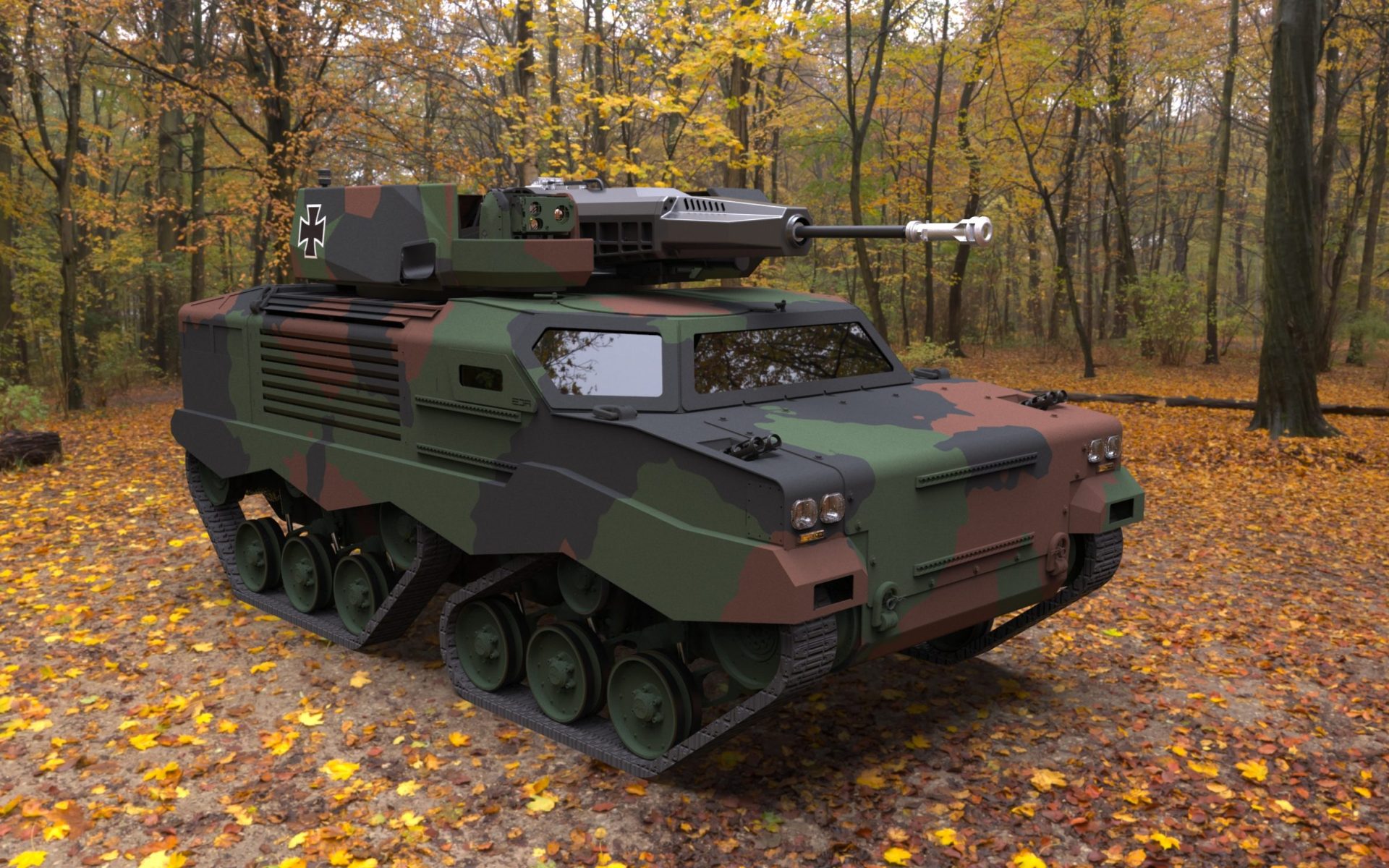
-
-
Well, Rheinmetall is a profit-oriented business... so not really surprising. I think however this is mainly related to the fact that KMW (as part of KNDS) now helps marketing Nexter's truck-based CAESAR howitzer and Rheinmetall wants to compete against that. KNDS basically decides beforehand which of its two entities (KMW or Nexter) will offer their solutions to potential customers. This means the Boxer RCH 155 (a KMW product, despite being based on the Boxer hull) might not be offered to certain customers, if KNDS believes that the CAESAR is more likely to gain a contract. In such a case, Rheinmetall would end up seeing no dime. In theory KMW also offers the AGM on Iveco trucks, but due to the cost and maturity of CAESAR, the latter option seems to be KNDS' first choice.
So Rheinmetall's HX3-based artillery is IMO mostly aimed to compete against ATMOS, ARCHER, CAESAR, DANA, and the likes. It is being offered to Germany, as Germany's requirements for the future wheeled SPG at the current stage are still were open, though supposedly the people at the Bundeswehr's artillery school in Idar-Oberstein already have declared the Boxer RCH 155 as their favored option.
KMW is also working on a new IFV to compete with the KF31/KF41 Lynx on the international market. The forced withdrawal from the Czech IFV program seems to have killed faith in any export success of the Puma, even though feedback was generally positive until their last minute requirement changes.
- Clan_Ghost_Bear, Beer, 2805662 and 2 others
-
 5
5
-
Regarding the MAN HX3 10x10 artillery variant:

Apparently the reason why Rheinmetall has not shown it firing yet is the fact, that it will be offered with the new 155 mm L/60 gun (the old L/52 gun can be fitted on customer request). It carries forty rounds of ammunition (projectiles + corresponding propellant charges) and has still 5 tonnes of growth potential. It can be operated remotely and (semi-)autonomous if desired. The turret can be fired at the whole 360° horizontal azimuth.
A very interesting offer. Rheinmetall seems to push for the HX3 as an alternative to the Boxer RCH155, but at the moment Germany is still expecting to field the old L/52 gun on the new wheeled SPG, mainly due to development schedules.
- Lord_James, Beer, David Moyes and 3 others
-
 6
6
-
The "€17 million initial price" is the total expected cost to reach the full operational capability as planned by the German MoD, i.e. all 350 Puma IFVs upgraded to the S2 standard with MELLS, the TSWA, situational awareness system etc. and development, spare parts, all maintenance and support contracts etc.
It is the full projected price of the complete program from the beginning to the projected end (i.e. Germany having 350 Puma S2 IFVs, operational ready and fully supported by the logistics). It is not the unit price for the original Puma IFV. The projected ~€1.9 billion for the upgrade of 154 Puma IFVs + 143 optional to the S1 configuration is already included in that figure.
OCCAR is not relevant to the Puma program and it is the wish of the Slovenian MoD to buy the Boxer; the Boxer is also not an "over the budget Euro system". Slovenia has to buy a new 8x8 after the Patria AMV contract was canceled (due to bribes) in order to meet its own goals and committments to NATO.



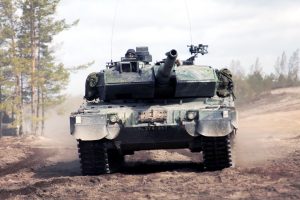
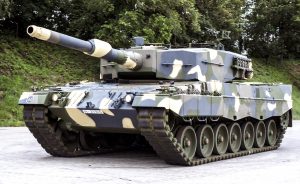
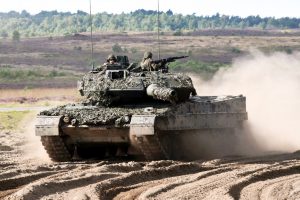
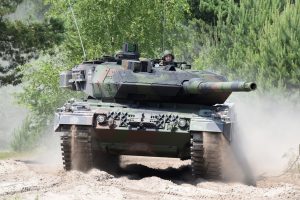
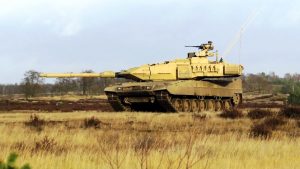
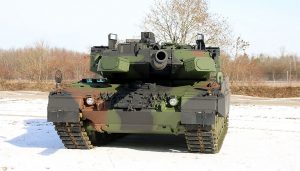
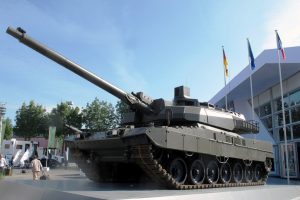
Land 400 Phase 3: Australian IFV
in Mechanized Warfare
Posted
Some footage from tests conducted in Germany (at least it seems like that) before shipping the Lynx prototype to Australia:
Coverage is a lot better than SolarSigmaShield on AS21. The Flintstones look is quite effective